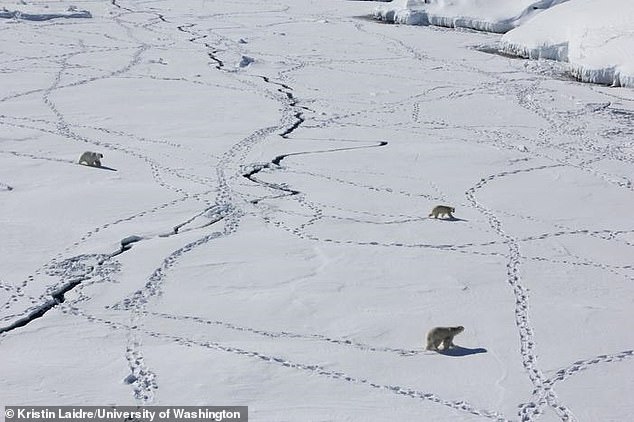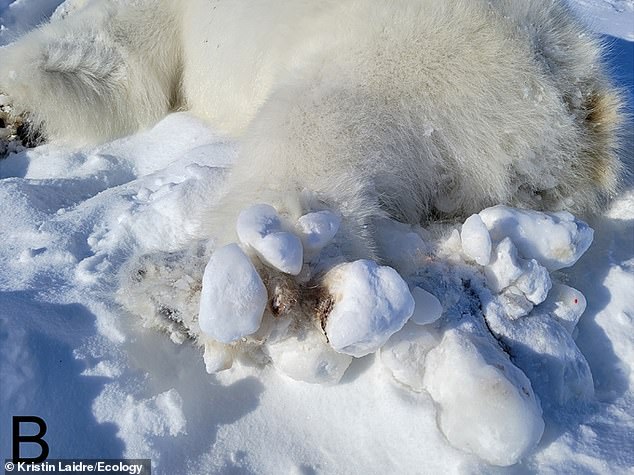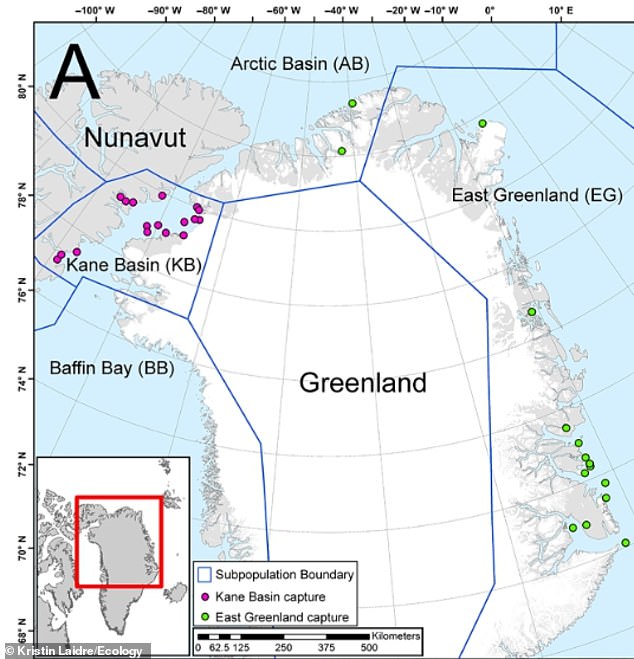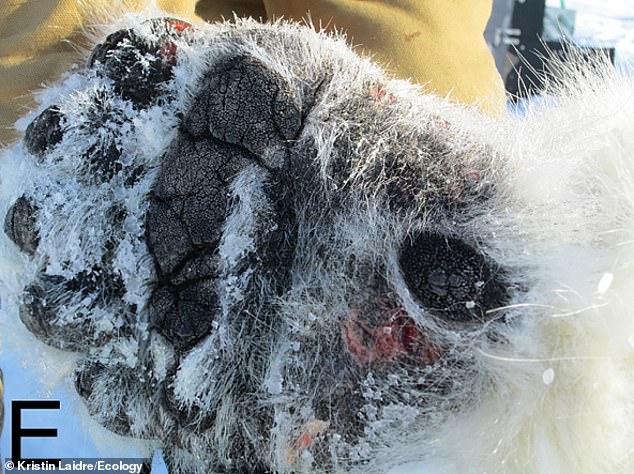Horrifying images show polar bears with painful ULCERS on their feet in the Arctic – and scientists say climate change is to blame
Polar bears are suffering horrific injuries to their feet – and it’s all due to climate change, a new study warns.
Scientists who spent a decade studying Arctic mammals discovered cuts, skin ulcers and hair loss in more than 40 of the creatures.
The experts think the warmer temperatures will melt the snow and turn it into slush.
This slush then freezes at sharp angles, causing cuts to the mammals that are used to stepping on the relatively soft snow.
Polar bears are already experiencing longer Arctic summers and an overall loss of sea ice, reducing access to prey and leaving them stranded.
But these newly documented ice-related injuries, described for the first time in a study, could be just as deadly.
Although experts “couldn’t track the fate of individual bears,” the injuries could reduce their ability to travel and hunt, further harming population numbers.
While examining the health of two polar bear populations, researchers discovered cuts, hair loss, icing and skin sores that mainly affected adult bears’ feet and other parts of the body.

In the photo, three adult polar bears travel across sea ice in eastern Greenland. The bears are already facing longer Arctic summers and an overall loss of sea ice, which is reducing access to prey and leaving them
The new study was led by Professor Kristin Laidre, a scientist at the Polar Science Center, Applied Physics Lab, University of Washington.
“In addition to the expected responses to climate change for polar bears, there will be other, unexpected responses,” she said.
‘As strange as it may sound, as the climate warms there are more frequent freeze-thaw cycles with more wet snow, and this leads to ice accumulation on polar bears’ paws.’
Between 2012 and 2022, Professor Laidre and co-author Stephen Atkinson, a wildlife veterinarian, studied two populations of polar bears in East Greenland and the Kane Basin, located between Canada and Greenland.
In the Kane Basin population, 31 of 61 polar bears showed signs of injuries caused by the ice, including hairless patches, cuts and scars.
In the second population in East Greenland, 15 of 124 polar bears had similar injuries.
In addition, two Greenland bears had blocks and ice balls up to 30 cm in diameter stuck to the pads of their feet, causing deep, bleeding cuts and making it difficult for them to walk.
After anesthetizing the creatures, the researchers carefully removed the ice balls.

Pictured: Severe ice accumulation on the hind foot pads of an adult male polar bear that was anesthetized in East Greenland in April 2022

Between 2012 and 2022, Professor Laidre and her co-author studied two polar bear populations in East Greenland and the Kane Basin (located between Canada and Greenland).
“The two bears most affected couldn’t run – they couldn’t even walk that easily,” Professor Laidre said.
“The ice chunks weren’t just stuck in the hair, they were stuck to the skin, and when you palpated the feet it was clear the bears were in pain.”
It is thought that more warm spells caused by global warming will cause surface snow to melt and then refreeze into a hard crust.
The heavy polar bears break through this ice crust and cut their paws on the sharp edges.
The researchers also point out that climate change has been linked to increased rainfall, because warmer air can hold more water.
As a result, the increased rainfall creates more moist, muddy snow that clumps on the feet and then freezes into a solid once temperatures drop.
Polar bears have tiny bumps on the pads of their feet that provide traction on slippery surfaces.
However, these bumps and the significant amount of hair that grows around the toes and soles of the feet make it easier for wet snow to freeze and accumulate on the paws.

The photo shows an example of ulcerative lesions on the foot of a polar bear. Note the tiny bumps on their paw pads that provide traction on slippery surfaces
It is already known that the surface of Arctic sea ice has less snow in late spring and summer due to climate change.
The snow that does exist experiences earlier, episodic melting and more frequent rain, which unfortunately means these injuries can continue and even increase.
The new study, published in the journal Ecologyoffers another reason why humanity should reduce greenhouse gas emissions and try to limit climate warming.
The team concludes: ‘As climate warming continues, there is the possibility that the conditions we describe – as well as other unexpected phenomena arising from a changed physical environment – could have individual and potentially population-level effects.
‘Climate change has broad ecological impacts on wildlife, especially species that rely on temperature-sensitive habitats.
‘These injuries have not been observed in previous research in these areas or reported in the scientific literature.’
